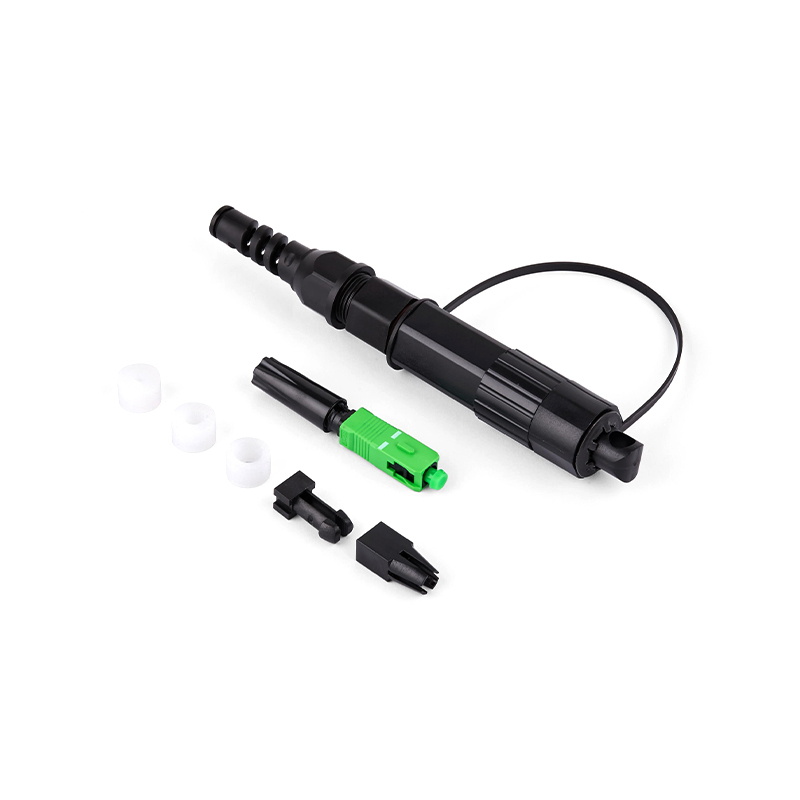What is a Planar Lightwave Circuit Splitter (PLC)?
2025-11-01
In today's rapidly developing information age, fiber optic communication networks have become the cornerstone of data transmission. Whether it's Fiber to the Home (FTTH), Passive Optical Networks (PON), or data centers, a core component is indispensable—the Planar Lightwave Circuit Splitter (PLC).
A PLC is an optical power management device based on planar waveguide (PLC) technology. Its main function is to evenly or proportionally split the optical signal from one or two optical fibers into multiple optical signals and distribute them to multiple end users or devices. Simply put, it acts like an "optical signal traffic policeman," responsible for distributing the upstream signal to multiple downstream paths.
Content
Core Technology and Working Principle: PLC Splitters
PLC splitters are fabricated using advanced semiconductor processes (such as silicon dioxide glass waveguides). Optical waveguide structures are created on a very small chip through processes such as photolithography and etching, enabling the coupling, splitting, and distribution of optical signals. This technology offers advantages such as high precision, small size, wide operating wavelength range, and high reliability.
Key Features and Advantages of PLC Splitters
Compared to traditional fused biconical taper (FBT) splitters, fiber optic PLC splitters offer significant advantages in modern optical communication networks:
- Excellent Splitting Ratio Uniformity: Ensures minimal difference in optical power allocated to each output port, crucial for high-quality communication in PON networks.
- Compact and Compact: The small size of the PLC chip facilitates packaging into various product forms, such as box-type splitters and miniature splitters, enabling convenient installation in confined spaces.
- Low Insertion Loss: Minimal power loss occurs when the optical signal passes through the splitter, ensuring both transmission distance and signal quality.
- Wide Operating Wavelength: Operates within the 1260nm to 1650nm range, meeting the application requirements of various PON technologies such as EPON and GPON.
- High Reliability and Stability: Utilizing robust packaging and high-quality materials, it can operate stably for extended periods in harsh environments.

Applications of PLC Splitters in Fiber Optic Networks
Fiber optic PLC splitters are an indispensable core component in Passive Optical Networks (PONs) and are widely used in various scenarios:
Fiber to the Home (FTTH)
Between the central office (OLT) and the user's unit (ONU), the PLC splitter distributes the optical signal from one OLT port to dozens or even hundreds of users. This is crucial for enabling home broadband access.
Data Centers
Used for optical signal distribution and routing to meet the demands of high-density connections and high-speed data transmission.
Fiber Optic Sensor Networks
Used for signal monitoring and distribution.
Common specifications include 1x2, 1x4, 1x8, 1x16, 1x32, and even 1x64 splitters to meet the design requirements of networks of different sizes.
How to Choose a High-Quality Fiber Optic PLC Splitter?
When selecting a PLC fiber optic splitter, the following technical parameters and factors should be given priority:
- Splitting ratio and number of ports: Determine the required splitting specifications based on the actual network design.
- Insertion loss (IL): Lower loss is better.
- Return loss (RL): A higher RL value indicates less reflected signal and better performance.
- Uniformity: Ensure that the power distribution difference between output ports is within an acceptable range.
- Packaging type: Select from bare fiber, ribbon, miniature steel tube, ABS box, or rack mount types based on the installation environment.
In summary, as a powerful "splitting" tool in fiber optic communication networks, the performance of the fiber optic PLC splitter directly determines the efficiency and reliability of the entire network. With the in-depth development of technologies such as 5G and cloud computing, the demand and performance requirements for PLC splitters will continue to increase, driving the optical communication industry towards a more efficient and intelligent future.











